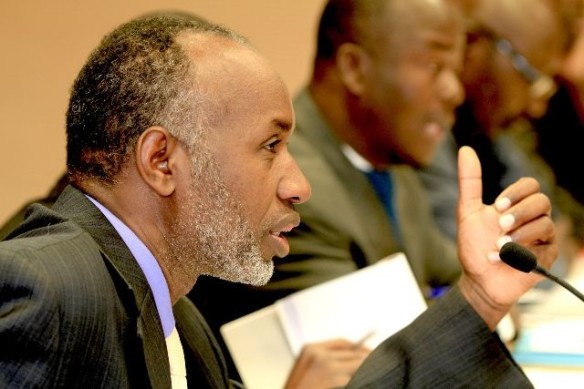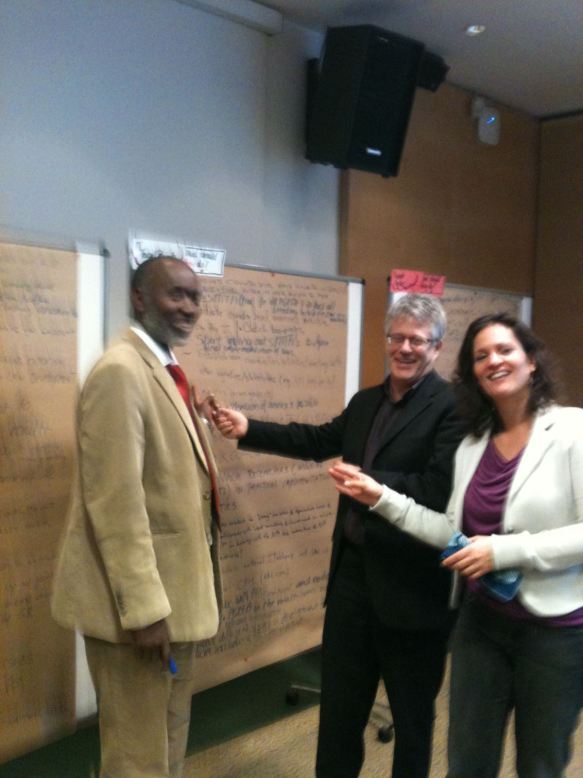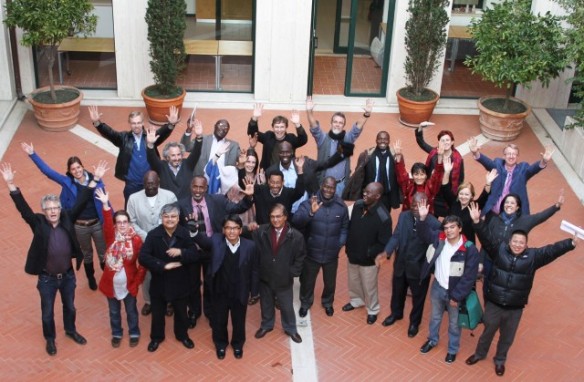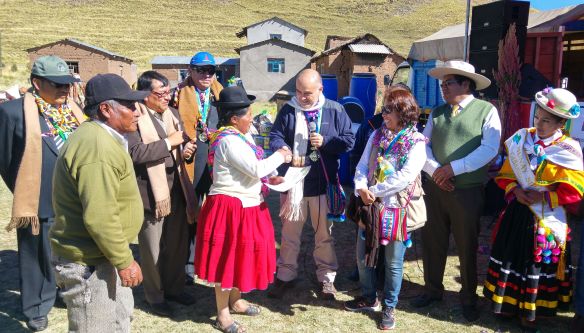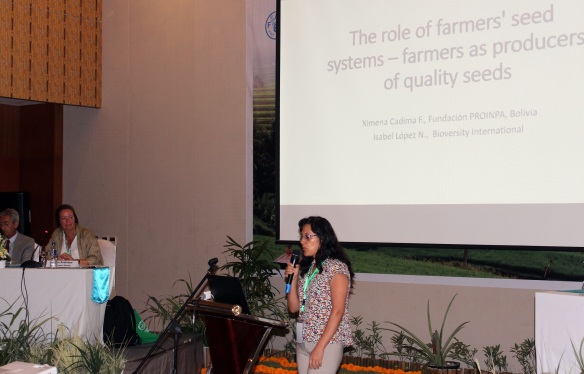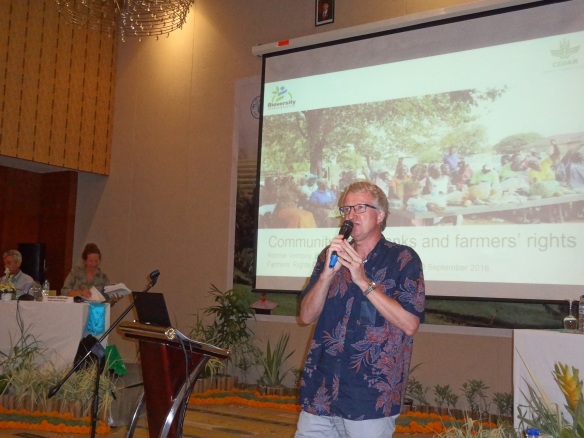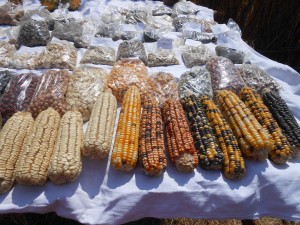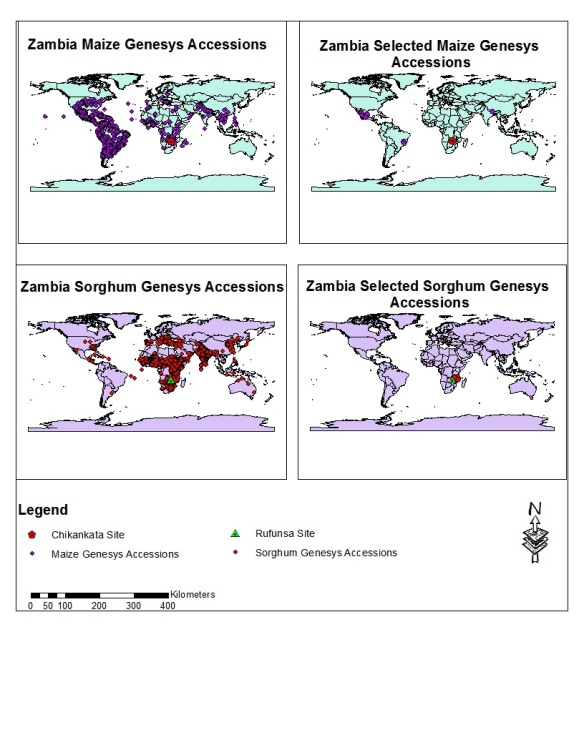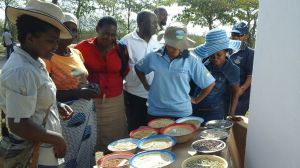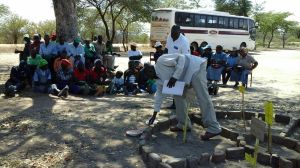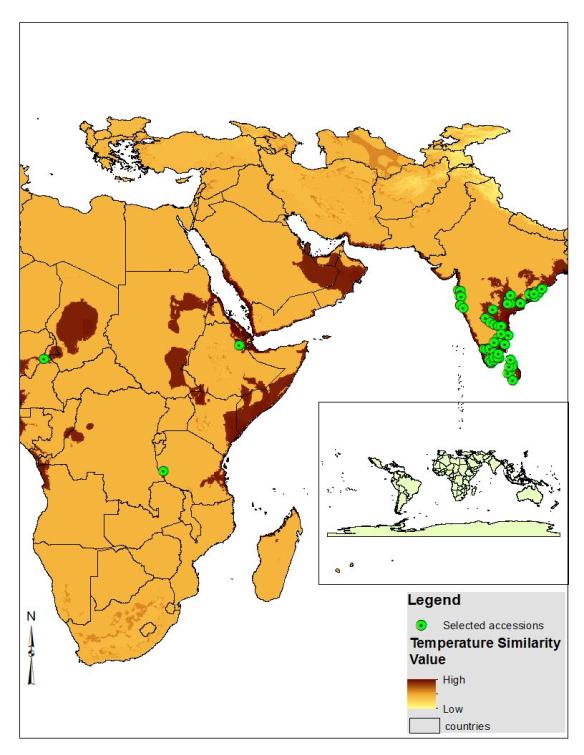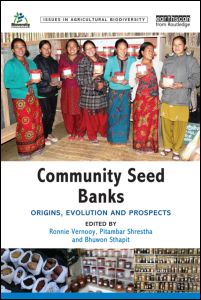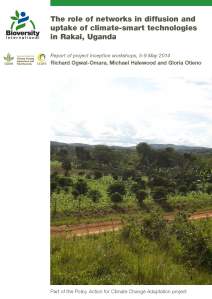We are delighted to share news about some outputs recently made available from the national teams in the GRPI2 project, and others that are under development, but will be finished soon. Some of these are available electronically and we include the links.
Bhutan
1. National Biodiversity Centre (NBC). (forthcoming) A study on the history of the introduction and adoption of important food crops in Bhutan. Rice, Maize, Potato and Chili. NBC, Bhutan.
2. Phuntsho, U. and Vernooy, R. (in press). Making technology transfer work: case studies of the food processing sector in Bhutan.
3. Tamang, A. and Dukpa, G. (in press). Bhutan: the Bumthang community seed bank. In: Vernooy, R., Shrestha, P. and Sthapit, B. Community Seed Banks: origins, evolution and prospects. Earthscan from Routledge.
Burkina Faso
1. Jade (2014). Traité international sur les ressources phytogénétiques pour l’alimentation et l’agriculture: 10 questions pour en comprendre l’essentiel (un poster à l’intention des chercheurs)/a poster for researchers. Download the file.
2. Jade (2014). Traité international sur les ressources phytogénétiques pour l’alimentation et l’agriculture (un dépliant en français reprenant l’essentiel des messages du traité)/a leaflet summarizing the key elements of the Treaty. Download the file.
3. Jade (2014). Banque de genes: Le coffre-fort de la future generation (bande dessinée vidéo en français scénarisant le contenu du traité et de son système multilateral). Idée originale: Souleymane Ouattara. Scénario: Souleymane Ouattara, Gaoussou Nabaloum et Pascal Ouédraogo, alias ‘Ledon’ (an animated video about the Treaty and the MLS)
4. Jade (2014). Et si le tô venait à disparaître? (un film sur les enjeux du traité à partir de cas et de témoignages d’acteurs) Réalisation: Souleymane Ouattara. (a film about the Treaty based on examples and viewpoints)
5. Jade (2014) Les graines de vie d’hier, d’aujourd’hui et de demain (un magazine radiophonique en langue nationale mooré de 45 minutes). Réalisation: Gaoussou Nabaloum. (a radio broadcast in the Moore’ language about the Treaty)
Costa Rica
1. Cabrera Medaglia, J. (2014) La implementación del Tratado Internacional de Recursos Fitogenéticos para la Alimentación y la Agricultura en Costa Rica : Recomendaciones legales y de política. Bioversity International, Rome and Comisión Nacional de Recursos Fitogenéticos, San José, Costa Rica . Download the file.
2. Cabrera Medaglia, J. (2014) Indentificación de las posibles autoridades nacionales competentes para la promoción de la implementación del Tratado Internacional de Recursos Fitogenéticos para la Alimentación y la Agricultura en Costa Rica. Bioversity International, Rome and Comisión Nacional de Recursos Fitogenéticos, San José, Costa Rica. Download the file.
3. CONAREFI (2014) (set of fact sheets). Fortalecimiento de las capacidades nacionales para la implementación del Tratado Internacional sobre los Recursos Fitogenéticos para la Alimentación y la Agricultura en Costa Rica
4. Elizondo Porras, F.L., Araya Villalobos, R., Hernández Fonseca, J.C. Martínez Umaña, K. (in press). Costa Rica: Unión de Semilleros del Sur. In: Vernooy, R., Shrestha, P. and Sthapit, B. Community Seed Banks: origins, evolution and prospects. Earthscan from Routledge.
5. Vásquez Morera, N. and Solano Sánchez, W. (2014). Diagnóstico de instituciones nacionales y regionales que conservan recursos fitogenéticos para alimentación y agricultura en Costa Rica. Bioversity International, Rome and Comisión Nacional de Recursos Fitogenéticos, San José, Costa Rica
Guatemala
1. Galluzzi, G. and Lapeña, I. (in press). Guatemala: Community seed reserves restore maize diversity. . In: Vernooy, R., Shrestha, P. and Sthapit, B. Community Seed Banks: origins, evolution and prospects. Earthscan from Routledge.
2. Lapeña, I., Vásquez, F. and Say, E. (2014). El Tratado Internacional sobre Recursos Fitogenéticos para La Alimentación y la Agricultura (TIRFAA) en Guatemala. Proceso de implementación del Sistema Multilateral de Acceso y Distribución de Beneficios. Download the file.
Nepal
1. Dilli, J., Manisha, J. and Pitambar, S. (in press). Nepal: the community seed bank in Tamaphok. In: Vernooy, R., Shrestha, P. and Sthapit, B. Community Seed Banks: origins, evolution and prospects. Earthscan from Routledge
Rwanda
1. Policy brief (forthcoming). Implementing the ITPGRFA and Nagoya protocol in Rwanda: implications for ABS.
2. Niyibigira T., Nyirigira A. and Otieno G. (forthcoming). Stakeholders in Technology transfer in Rwanda: the case of Biofortified beans.
3. Dusengemungu, L., Ndacyayisenga, T., Otieno, G., Nyirigira, A.R. and Gapusi, J.W. (in press). Rwanda: the Rubaya community gene bank. In: Vernooy, R., Shrestha, P. and Sthapit, B. Community Seed Banks: origins, evolution and prospects. Earthscan from Routledge
Uganda
1. Zaake E., Mulumba J.W., Otieno G. and Ogwal R. (forthcoming). The History of Crops Domestication and Interdependence: Case studies of Major Staples in Uganda.
2. Mulumba J.W., Otieno G. and Ogwal R. (forthcoming). Networks matter: Systemic interactions and coalitions in the implementation of the International Treaty for Plant Genetic Resources for Food and Agriculture in Uganda.
3. Adokoracha, J.; Kiwukaa, C., Zaakea, E.; Nankya, R. and Mulumba, J.W. (forthcoming). Stakeholders involvement in technology transfer in Uganda.
4. Policy brief (forthcoming) Policy implementation and legal space for the International Treaty on Plant Genetic Resources for Food and Agriculture (ITPGRFA) in Uganda.
5. Mulumba, J.W., Nankya, R., Kiwuka, C., Adokorach, J., Otieno, G., Kyomugisha, M. Fadda, C. and Jarvis, D.I. (in press) Uganda: the Kiziba community gene bank. In: Vernooy, R., Shrestha, P. and Sthapit, B. Community Seed Banks: origins, evolution and prospects. Earthscan from Routledge.
